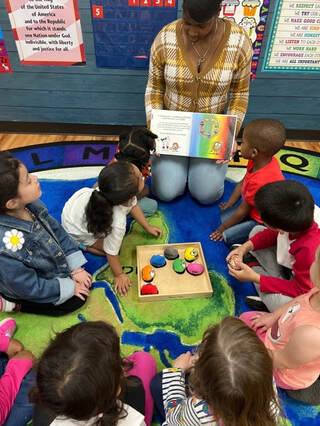|
Taking care of children is a responsible task, and when it comes to their well-being and emotions, it becomes even more challenging. Every child is born with emotions. These emotions are inbuilt, but children are unaware of how to name these emotions and how to manage and interpret them once they encounter these emotions in certain situations.
In Montessori Daycare, the children learn about emotions and they are encouraged to explore, learn and deal with their emotions as they go through them. There are a few suggestions that are applicable in different situations and help your children with their emotional well-being. 1. Talk about Emotions When we see a child going through certain emotions, we can always make an intelligent guess but it is hard to completely understand a child’s state of mind. So the first task we need to do is to talk about his emotions and assure him that we completely understand his feelings. For example If one child’s toy is snatched away by another child and the first one shows anger and retaliation towards the second child. Talk to the child first and explain to him that you understand, "I know the other child took your toy away, which is making you upset and sad and I would feel the same if I were in your position." And then try to resolve the situation in a friendly manner. This will make the child feel that his emotion is being understood, rather than telling the child that he is showing anger just because his toy has been taken away and his anger is not an acceptable behavior. In this case the child will feel that his emotions are not important and are being neglected. We as adults need to normalize the experience of these emotions in the children. 2. Walk the Talk about Emotions Before helping the child with his emotions, we need to first help ourselves with our emotions. This means we need to first address the emotions we are experiencing at that moment. For example If the child is throwing away his toys and we say, “John, I am feeling really frustrated because you keep throwing your toys away and instead of playing with them you are making the place messy." Rather showing our frustration and using frustrating words with the child, we need to first calm ourselves down, take a deep breath and then communicate so that we can clearly address the problem and give the solution to the child. 3. Exertion Another support for emotional well-being in the Montessori environment is through exertion. This does not demand physical labor but it is the structured way children move in a Montessori environment to perform tasks and activities to satisfy their internal urges. These purposeful movements to carry out activities are the most integral part of the Montessori environment and help children develop their order and concentration which consequently enhances their emotional stability.
0 Comments
Your comment will be posted after it is approved.
Leave a Reply. |
Blogs
Author
As a highly experienced Montessori educator with a coveted AMI credential from Association Montessori International, I have spent over 22 years helping children discover their full potential through an individualized approach to learning. Along the way, I have mentored and coached countless educators, equipping them with the tools and techniques to foster growth in their own students. In fact, I have trained over 65 teachers to date. Currently serving as a Director, I bring a wealth of knowledge and expertise to every aspect of my work. Whether you are a parent seeking the best educational opportunities for your child or an educator looking to improve your own practice, I am confident that I can help you unlock your full potential. Archives
June 2024
|
Contact Us
|
|
| Child Care Learning Center | Daycare Center |
Blossoms Montessori School All Rights Reserved.

